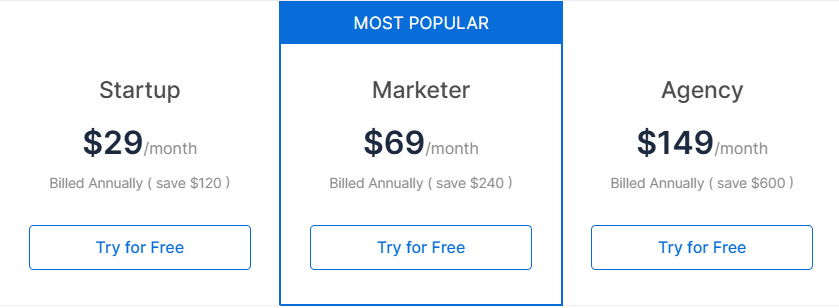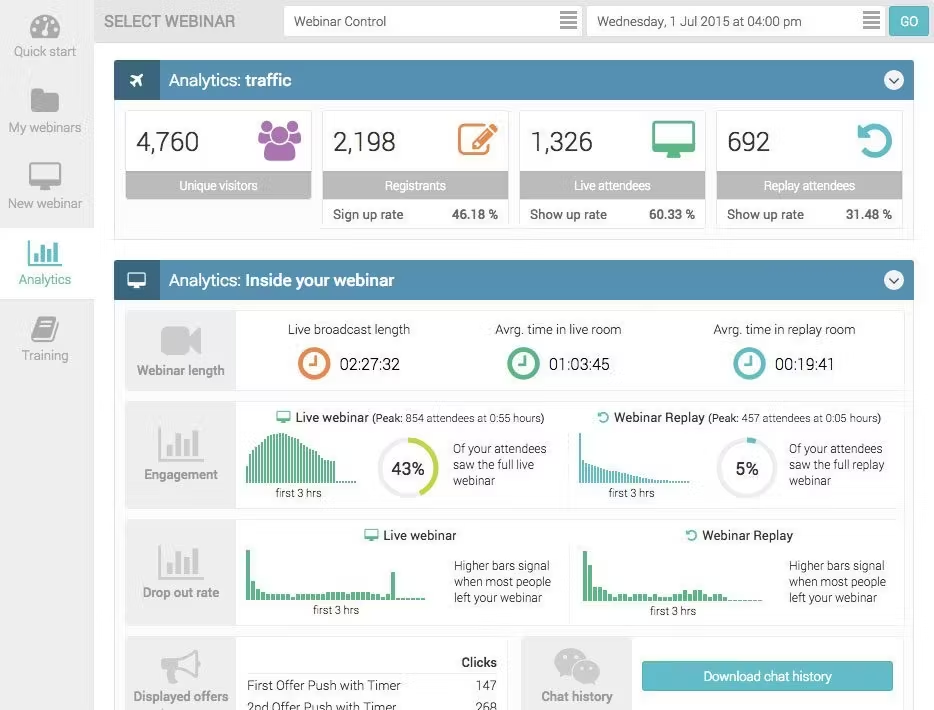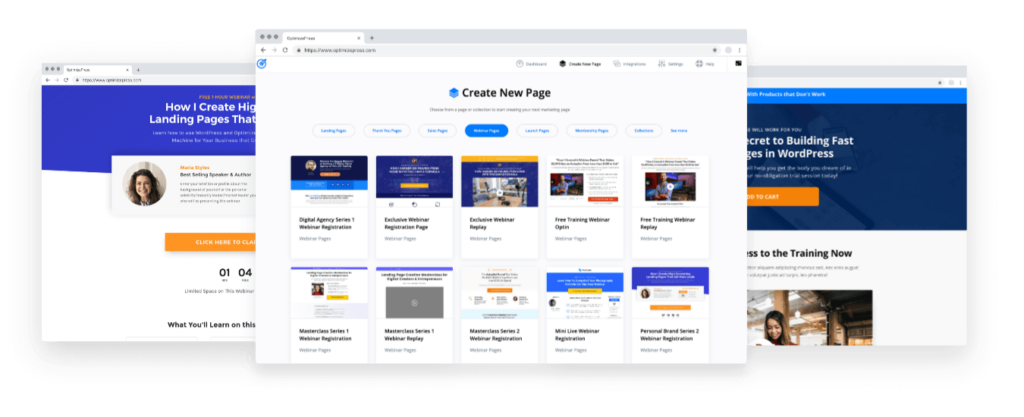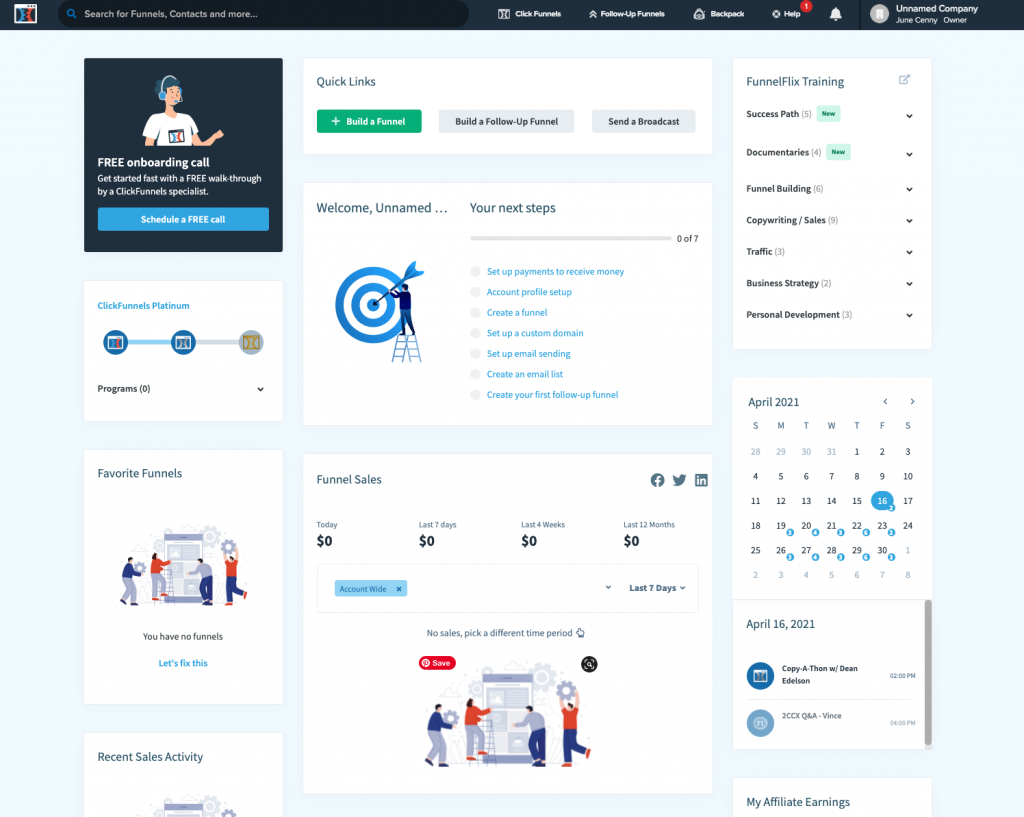10 Affordable Unbounce Alternatives to Boost Conversions
March 2025 update: We’ve updated this article for accuracy, added new alternatives to Unbounce and refreshed pricing details.
Unbounce has long been a popular choice for creating and optimizing landing pages, but it might not be the best fit for everyone’s budget or requirements.
Fear not, for there are powerful and affordable Unbounce competitors out there!
We’ve researched and tested a plethora of landing page builders and handpicked the top 10 Unbounce alternatives that help you build beautiful, high-converting landing pages without burning a hole in your wallet.
Table of Contents
What is Unbounce used for?
Unbounce is a well-established landing page builder perfect for those without coding experience or others that want a quick solution. Choose from one of the many customisable templates available, drag and drop and then publish your landing page. Unbounce also offers a user-friendly service, extensive AI insights with ‘Smart Builder’ so you can make improvements based on the data, and you can easily run A/B tests. They provide unlimited landing pages, sticky bars and pop-ups for mobile and desktop on all three price plans.
For small to medium-sized businesses that want a fast and straightforward landing page builder, Unbounce is a solid choice. And with some clever Unbounce hacks, it can be an even more powerful beast – not to mention adding an Unbounce multi step form!
That said, it’s worth exploring all of your options to find a landing page builder that suits both your company and your budget. Below we’ve picked ten of the best alternatives to Unbounce this year.
Why Look for Unbounce Alternatives?
While Unbounce is a popular landing page builder, it may not be the perfect fit for every business. Here’s why you may want to consider other options:
- Cost Considerations: Unbounce’s pricing starts at $99/month, which may be too expensive for small businesses or startups looking for more budget-friendly solutions.
- Limited Features Beyond Landing Pages: While Unbounce excels at landing page creation, it lacks built-in email marketing, CRM, and automation tools that other platforms offer.
- Customization Flexibility: Some users find Unbounce’s design capabilities restrictive compared to more advanced page builders with greater design freedom.
- Better Multi-Channel Capabilities: If you need pop-ups, chatbots, or automated funnels alongside landing pages, an all-in-one marketing suite might be a better choice.
- Scalability Needs: Larger businesses may require a platform that includes lead management, personalized marketing automation, and seamless integrations beyond what Unbounce provides.
By considering these factors, you can explore Unbounce alternatives that align better with your business strategy and long-term goals.
10 Alternatives To Unbounce
- Landingi
- System.io
- Instapage
- Sendinblue
- Leadpages
- Swipe Pages
- Kartra
- OptimizePress
- ClickFunnels
- GetResponse
1. Landingi
Landingi is a snappy landing page creator that provides over 300 crisp and customisable templates. The drag and drop functionality allows you to create your landing page within minutes, while the campaign scheduler enables you to set a time to publish your landing pages in advance. You can also integrate your favourite third-party tools for CRM, sales, email, ecommerce and more.
In terms of functionality, Landingi’s user-friendly drag-and-drop editor allows for easy customization of templates, while Unbounce arguably provides a more advanced editor with greater flexibility in terms of design. Both platforms offer a wide range of responsive templates, A/B testing and analytics. However, Unbounce stands out with its AI-powered Smart Traffic feature, which automatically directs visitors to the most relevant version of a landing page for better conversion rates.
Landingi offers three pricing options: Free, Professional and Agency – which you can pay monthly or annually. Each tier has unlimited landing pages and conversions, but the cap on page visits and the number of custom domains increases with each level.
Landingi is cheaper than Unbounce, with the fully-featured Professional plan costing just $49 per month. Even the Agency plan weighs in at just $149 per month. For comparison, Unbounce’s cheapest plan on a monthly commitment is $99 per month.
Some tiers include the migration service to help you get up and running with less hassle. Professional will be a smart choice for most, with unlimited landing pages, conversions and real-time data sync. It’s worth mentioning that PageInsider offers AI insights on your landing page; it checks your copy and shows heatmaps and other valuable details.
If you pay upfront with the annual option, you save two months off the overall cost, which is worth considering. You can also try the free 14-day trial available across all tiers.
2. Systeme.io
While Unbounce focuses mainly on landing page creation and advanced design capabilities, Systeme.io aims to be more of an all-in-one platform – simplifying the entire process of managing an online business. This makes Systeme.io particularly attractive for entrepreneurs and small business owners who want a single platform to manage multiple aspects of their marketing efforts.
In terms of landing pages, it’s as straightforward as you might expect, with a simple drag-and-drop editor that gets the job done. There are also squeeze page templates and tutorials to guide you. If you need help, the support team are on hand with an average response time of under two hours, seven days a week. For solopreneurs and small businesses just getting started, Systeme is a great choice.
Additionally, Systeme.io offers competitive pricing, making it an affordable option for businesses with limited budgets. However, when it comes to landing page creation specifically, Unbounce’s more sophisticated editor and AI-powered Smart Traffic feature may offer a higher level of customization and optimization.
Ultimately, the choice between Unbounce and Systeme.io will depend on the user’s focus: those who prioritize landing page design and optimization may prefer Unbounce, while those looking for an all-encompassing marketing solution might find Systeme.io to be a better fit.
Systeme offers four main tiers: Free, Startup, Webinar, and Unlimited. The free plan offers unlimited emails and blog posts, as well as deadline funnels, Stripe integration, PayPal integration, an affiliate program, 24/7 email support and one custom domain—excellent value for money as it’s free forever and requires no credit card details.
The Webinar option comes in at $47 and is cost-effective if you need ten domains, 50 A/B tests, 50 sales funnels, 300 sales funnel steps, 20 blogs and much more. You can start a free trial on a plan of your choice:
3. Instapage
Instapage offers pixel-perfect images and a high level of customisation in an easy-to-use drag-and-drop editor. It features over 200 landing page templates, 5,000 fonts, and 33 million images, and you can scale pages using Instablocks. You can also personalise each advert with multiple audience segments for every landing page you design.
Functionality between Unbounce and Instapage is fairly similar, but Instapage does boast a wider selection of industry templates. It also offers advanced features like heatmaps, collaboration tools, and AdMap for syncing landing pages with Google Ads.
Instapage’s platform has handy features such as hotkeys, axis lock, and parallax scrolling to streamline the process. You can create and import code with JavaScript, CSS/HTML and third-party scripts in the custom code editor, so each page gets shaped how you want it. There’s also the ability to collaborate with your team on landing pages visually—no back-and-forth with multiple revisions and emails—and the edits are accessed in real-time to give individual and private client feedback.
Both builders have clearly benefited from plenty of research & development – and ultimately, your chosen tool may simply come down to personal preference.
Instapage is ideal for mid to enterprise-level companies and agencies. However, if you’re a small business, you’ll likely find the price too expensive.
The pricing plan is simple and comes in two tiers, ‘Build and Convert‘, paid annually and monthly. At $299 a month, the Build plan includes app integration, unlimited domains, mobile pages that load instantly, SSL encryption, SOC2 compliance, A/B testing, conversion analytics, and more. A 14-day free trial is available.
The second-tier features everything from the first and can be tailor-made to suit your precise specifications. For a custom quote, you’ll have to contact their sales team.
4. Sendinblue
Sendinblue is an all-encompassing digital marketing solution that allows you to connect with your customers via email and SMS. If you’re sick of waiting for replies to your messages and emails, you’re in good hands—the customer support team is excellent.
The central dashboard incorporates everything you need in one place with complete integration of email mailing lists and forms so you can keep creating. Sendinblue has over 100 tested templates available on both mobile and desktop for landing pages. If you want to add HTML, you can, as well as a logo and favicon (favorite icon) for consistency.
Sendinblue only offers multi-user login and the landing page software itself in the Premium and Enterprise Plans, so keep that in mind. For some businesses, the selection of landing page templates will be too limited, but again, this depends on your priorities.
Sendinblue has four price points: Free, Lite, Premium and Enterprise. Premium starts at $65 a month and includes all of the features of Lite, as well as marketing automation, Facebook ads, multi-user access, landing pages, and telephone and live chat support. Sendinblue provides a ticket system for the Free and Lite plans. You’ll need to contact the Sales Team for a custom quote for the Enterprise plan.
It’s also worth emailing the team and asking about a demo—it doesn’t hurt to ask—for the Lite, Premium and Enterprise tiers.
5. Leadpages
Leadpages offers over 200 pre-made templates, a wide selection of fonts and colours to choose from, and the drag and drop editor is a breeze. The editor visually shows your edits and then automatically saves your designs—there’s no page limit. You can easily create pop-ups and alert bars with the same tool.
In terms of functionality, it’s easy to integrate widgets, tools, videos, and timers on your pages, and you can access them on tablets and mobile. For those that love A/B testing, you’ll have access to side-by-side comparisons of your landing pages to see what works and what doesn’t.
However, it’s worth noting that the A/B testing isn’t unlimited on the standard plan—something to consider. Another niggle is that bloggers can’t publish pages from Leadpages, so your blog would have to function on a separate site, but there’s a possibility it’ll become an additional feature in the future.
Leadpages focuses on providing a user-friendly experience with a simpler drag-and-drop editor, a vast library of templates for various industries, and an easy-to-use interface. Overall, it could be said to be the “simpler” landing page builder of the two, and could be a great choice for smaller businesses and individuals seeking a more cost-effective and straightforward landing page solution:
Leadpages offers two price points: Standard and Pro, but they can provide advanced plans if these don’t cater to your exact business needs—you’ll need to reach out for a custom quote. The Standard plan comes with tech support, over 40 integrations, free hosting, one domain, unlimited landing pages, pop-ups, and alert bars. Although similar to Unbounce, there are no restrictions on traffic and leads, which is a great extra. You can try out either plan with the free 14-day trial.
6. Swipe Pages

Swipe Pages is a landing page builder designed for lightning-fast, mobile-first landing pages with a simple drag-and-drop editor. The platform stands out with AMP (Accelerated Mobile Pages) support, ensuring ultra-fast loading speeds, which improves mobile conversions and SEO rankings.
Swipe Pages also offers advanced analytics to help track performance, A/B testing for optimization, and seamless integrations with popular marketing tools. For businesses seeking simplicity and speed, Swipe Pages is an excellent choice, especially for mobile-first strategies. However, if you’re looking for highly customizable templates or more intricate automation tools, you may need to consider other options.

For those who want cost-effective performance, Swipe Pages offers pricing that starts at $29/month for the Startup plan, significantly cheaper than Unbounce’s $99/month base plan. However, it lacks advanced AI optimization tools, making it better suited for businesses that prioritize mobile performance over AI-driven landing page personalization.
7. Kartra

Kartra is an all-in-one marketing platform designed to handle landing pages, email marketing, sales funnels, automation, and even membership site management. It’s a strong alternative to Unbounce for businesses that need more than just a landing page builder and want an integrated marketing suite.
What sets Kartra apart is its comprehensive approach. Instead of relying on a mix of third-party tools, Kartra allows you to manage your entire business from one central dashboard. The platform also offers powerful automation sequences that can nurture leads through personalized journeys, boosting your conversion potential.
Kartra’s drag-and-drop page builder is intuitive and integrates seamlessly with its full suite of tools. However, Kartra’s page builder is not as flexible as Unbounce’s, and it lacks some AI-powered Smart Traffic capabilities that Unbounce users benefit from.

Kartra’s pricing starts at $83/month, which matches Unbounce’s entry-level plan, but offers much broader marketing capabilities beyond just landing pages. This makes Kartra a great choice for businesses that want an all-in-one platform rather than just a standalone landing page tool.
8. OptimizePress

OptimizePress is a WordPress-based landing page builder that focuses on lead generation, sales funnels, and membership sites. The tool focuses on simplicity and speed, with a wide range of templates that cover everything from sales pages to webinar signups.
One of OptimizePress’s biggest advantages is full control and ownership of your landing pages, eliminating the need for recurring SaaS fees. However, it lacks Unbounce’s AI-driven features, advanced A/B testing, and Smart Traffic technology, which might be a dealbreaker for businesses that prioritize data-driven conversion optimization.

Pricing for OptimizePress starts at $8.25/month, making it significantly more cost-effective than Unbounce’s monthly plans. It’s ideal for businesses that prefer a WordPress-based solution and want to avoid ongoing software subscription costs.
9. ClickFunnels
ClickFunnels is a sales funnel builder that allows users to create high-converting landing pages, lead capture forms, and automated sales funnels without needing coding experience. It’s a strong alternative to Unbounce for businesses focused on driving sales and upsells rather than just capturing leads.

While Unbounce focuses on standalone landing pages optimized for conversions, ClickFunnels provides an end-to-end funnel system, including email automation, checkout pages, and upsell/downsell features. This makes ClickFunnels a more comprehensive tool for e-commerce and service-based businesses. However, ClickFunnels has fewer design customization options than Unbounce, and its landing page editor is less flexible.

Pricing for ClickFunnels starts at $81/month. Given its built-in automation, sales features, and e-commerce capabilities, ClickFunnels may offer better value for businesses looking for a complete marketing and sales solution rather than just a landing page tool.
10. GetResponse

GetResponse is primarily an email marketing platform that also includes a landing page builder, webinar hosting, and marketing automation features. GetResponse is ideal for businesses looking for an all-in-one solution that focuses on inbound marketing. The landing page builder is intuitive and offers a lot of pre-designed templates, while the automation features help nurture leads through targeted email sequences.
Unlike Unbounce, which specializes in standalone landing pages and AI-driven conversion optimization, GetResponse provides a broader marketing suite, allowing users to capture leads, nurture them with automated email sequences, and even host webinars. However, GetResponse’s landing page builder is more limited compared to Unbounce’s, offering fewer design options and advanced features like Smart Traffic.

Pricing for GetResponse starts at $15/month, making it one of the most affordable alternatives to Unbounce. For businesses that prioritize email marketing and automation alongside landing pages, GetResponse provides an excellent cost-effective solution with strong lead nurturing capabilities.
Landing page builders FAQ
Here are some frequently asked questions about landing page builder software.
How much does Unbounce cost?
As of 2023, Unbounce costs $99 per month when billed monthly on their launch plan, going up to $240 for higher plans. Users get 25% off for paying annually. The launch plan includes 500 conversions per month, or up to 20,000 visitors.
How can I add a multi step form to Unbounce?
Although it’s easy to add a simple form to Unbounce, the form builder is fairly limited and doesn’t support multi step forms – which can increase conversion rate significantly.
To create a multi step form in Unbounce, try a 14 day free trial of Growform – there is an Unbounce specific guide here.
Is Unbounce worth it?
Unbounce is a powerful tool, and was clearly built from the ground up to focus on improving your conversion rate. If you’re looking to build landing pages quickly, you might try Systeme. If you’re after something cheaper, Landingi is a good alternative. Or, if you’re more of a corporate customer, Instapage is a solid option. And if you just like Unbounce – stick with Unbounce!
Can I use free landing page builders?
Yes, free landing page builders are available on the market, but you’ll need to do your research, as some can be limited. Your best bet is to use a website builder as part of an all-in-one marketing platform or via an email marketing automation tool, as they tend to offer landing page builders within the packages.
Try out different free trials to see what works for your company. Just be wary about giving over your payment details, as some companies are bad at cancelling and will bill you regardless.
Is there a difference between a homepage and a landing page?
Yes. A homepage allows you to quickly move to different pages on your site, such as the blog or contact page and has many functions. It should inform and describe your brand. The homepage may include other features like testimonials, certificate logos and awards to encourage trust.
In contrast, a landing page doesn’t have a navigation bar and gets created with a sole purpose in mind: to receive and convert traffic produced by your digital marketing campaign. The CTA should stand out on the landing page with a button—experiment with colours to see what works. When you click the CTA, it should lead you to one place like a form and then deliver on its promise without being a time sink.
How do landing pages affect SEO?
Landing pages are good for SEO—the more, the better. According to HubSpot, businesses with 30 or more landing pages create seven times more leads than those with fewer than ten.
With landing pages, you can specifically target and optimise information based on visitors’ behaviour and keep tweaking for a better user experience. The visitor gains something like signing up for a free demo, webinar, or discount. As a result, your business grows in reputation, leads, and traffic. Don’t underestimate the power of this marketing tool.
Need more leads?
You’ve successfully chosen a landing page builder, created some stunning landing pages, and customers are coming to your site, but they aren’t staying to fill in their details. It happens.
In a world of instant gratification, people need to feel rewarded and encouraged at every step of the process, or else they’ll switch off. In fact, 53% of mobile users abandon forms that take over 3 seconds to load. You overcomplicate things at your peril.
Enter multi-step forms.
What are multi-step forms?
Multi-step forms are tools that capture information and convert visitors into leads while significantly boosting conversion rates. They are a vital part of digital marketing campaigns and are generally—although not always—found on the landing page.
Less information is displayed at once with multi-step forms because they break sections down with a progress bar; therefore, customers are more willing to invest their time and money in your business.
A typical web form has too many questions, and the choices can seem overwhelming, leaving the user to question whether they are applying for a job or not. Multi-step forms differ. They use the psychological principle of ‘Sunk Cost Fallacy’ to persuade and seamlessly guide the customer into starting and completing their journey.
By almost gamifying the process, you make it visually pleasing, simple, and satisfying for the page visitor. It creates a sense of momentum, like being second in a queue—by waiting a few minutes, the customer knows the reward is within reach. With multi-step forms, users want to click on the next question, and before they know it, the sign up is complete.
The layout is important too, and you might need to rethink the questions and order to ask them. For example, requesting personal details straight away is a big no-no—you need to ease them in first. The aim is to ask relevant questions that provide the customer with an explicit quid pro quo exchange.
The good news? You can do all that and more with Growform, a hassle-free multi-step form builder – and it works with all of the landing page builders mentioned
Growform gives you instant access to over 20 lead gen templates, the forms load blazingly fast, and you can send leads to over 300 locations with Zapier.
Try it out for free with a 14-day trial. No credit card details required.
Recent Posts
- Your Guide to Using Webflow Form Builder Effectively
- Top 5 Lead Capture Form Examples That Can Boost Your Conversions (2025)
- What Is an Elementor Multi-Step Form & How Does Growform Improve It?
- We Review The Best Microsoft Forms Alternatives for Better Customization and Control
- Here’s Our Review of the Best Form Builders For WordPress Sites
